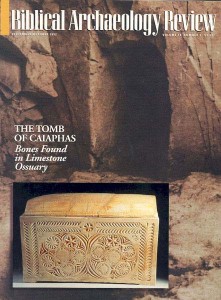Glossary: How to Date a Cooking Pot
Sir Flinders Petrie (1853–1942) first recognized that lowly potsherds could help pinpoint the date of the archaeological strata in which they were found. Building on Petrie’s insight, William Foxwell Albright (1891–1971) and his students defined the pottery features associated with the ancient Near East’s various chronological periods.
While the type of clay used, method of manufacture (wheel-made, handmade or a combination of the two), decoration, firing method at low or high temperature and size are all important for dating a ceramic artifact, the single most crucial criterion is shape. And though the overall shape is significant, rims, bases and, sometimes, handles are more diagnostic than body sherds. There are two caveats, however. First, a standard pottery type may have had many variants. Second, similar ceramic types from different sites may not all date to the same period; a new manufacturing technique or style may have been introduced at different times in different locales, and some ceramic types may have survived longer in certain places than at others.
One of the most helpful ceramic types for dating purposes is the cooking pot. For one thing, cooking-pot shapes for the various archaeological periods are by now well established, and, for another, cooking pots (or their sherds) are ubiquitous! Becoming an expert in pottery typology is a lifetime pursuit, but nothing can take the place of direct contact with the pottery itself. (In addition to its observable features, pottery has a “feel” to it.) To an excavator’s trained eye, these humble products of the past are a godsend.
Already a library member? Log in here.
Institution user? Log in with your IP address.

